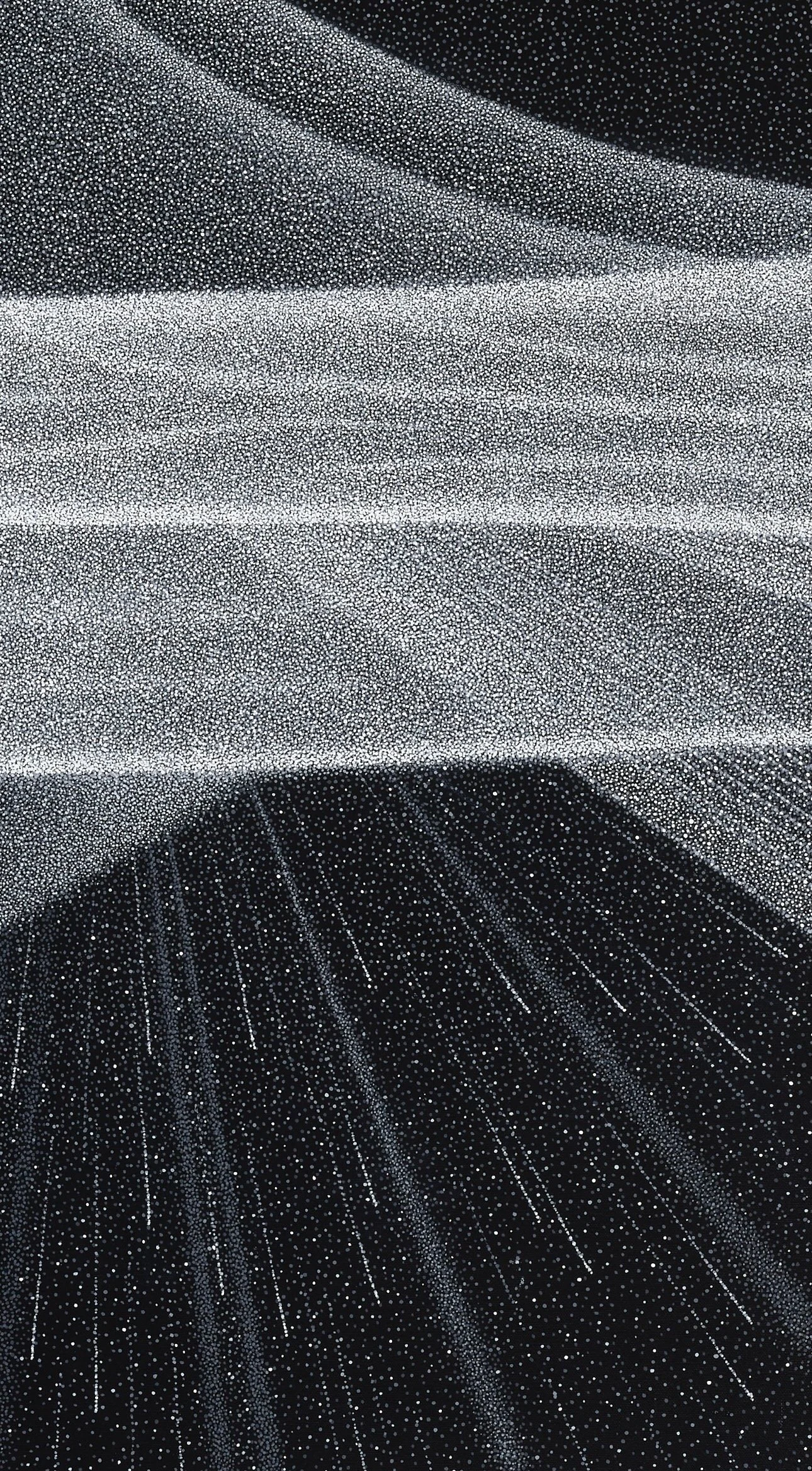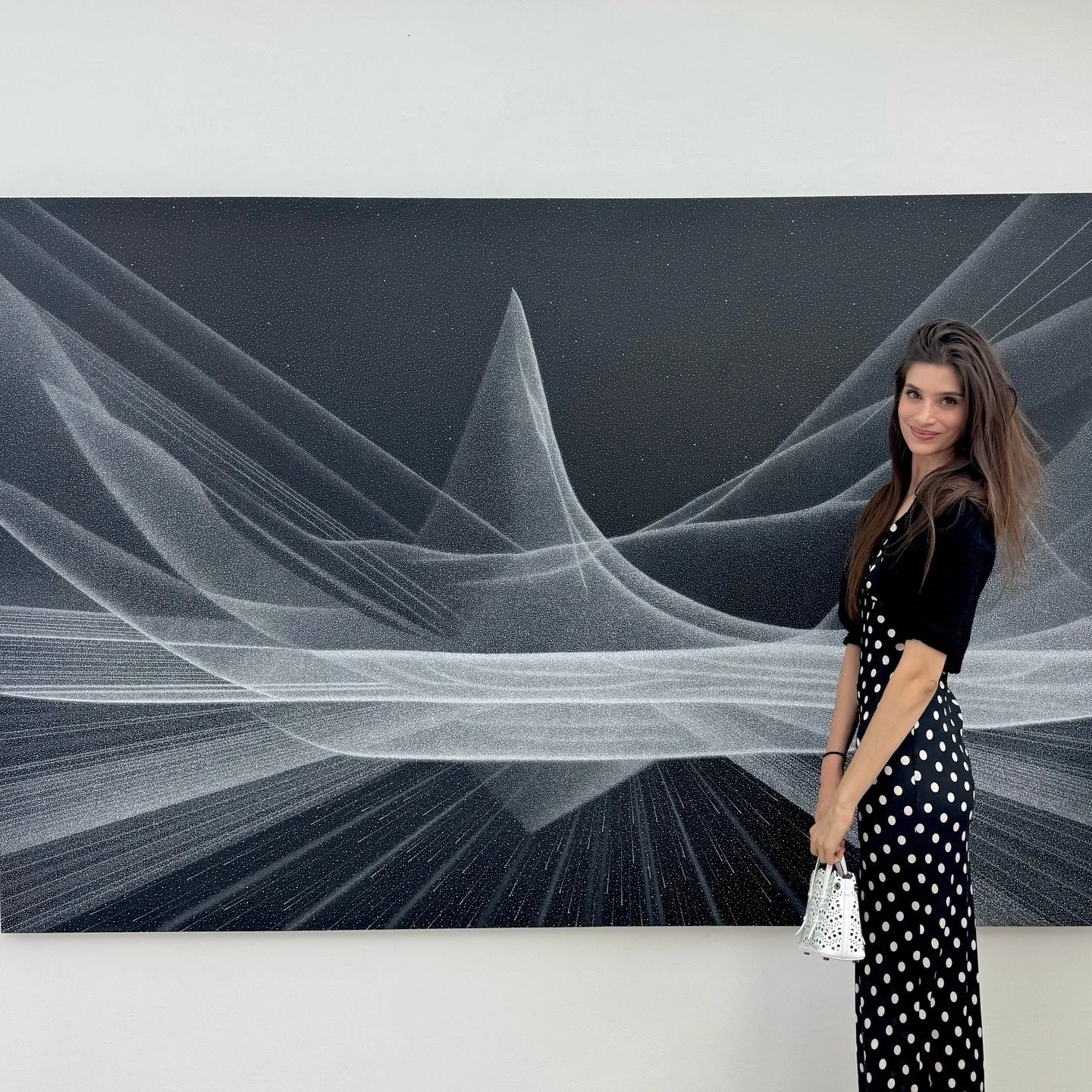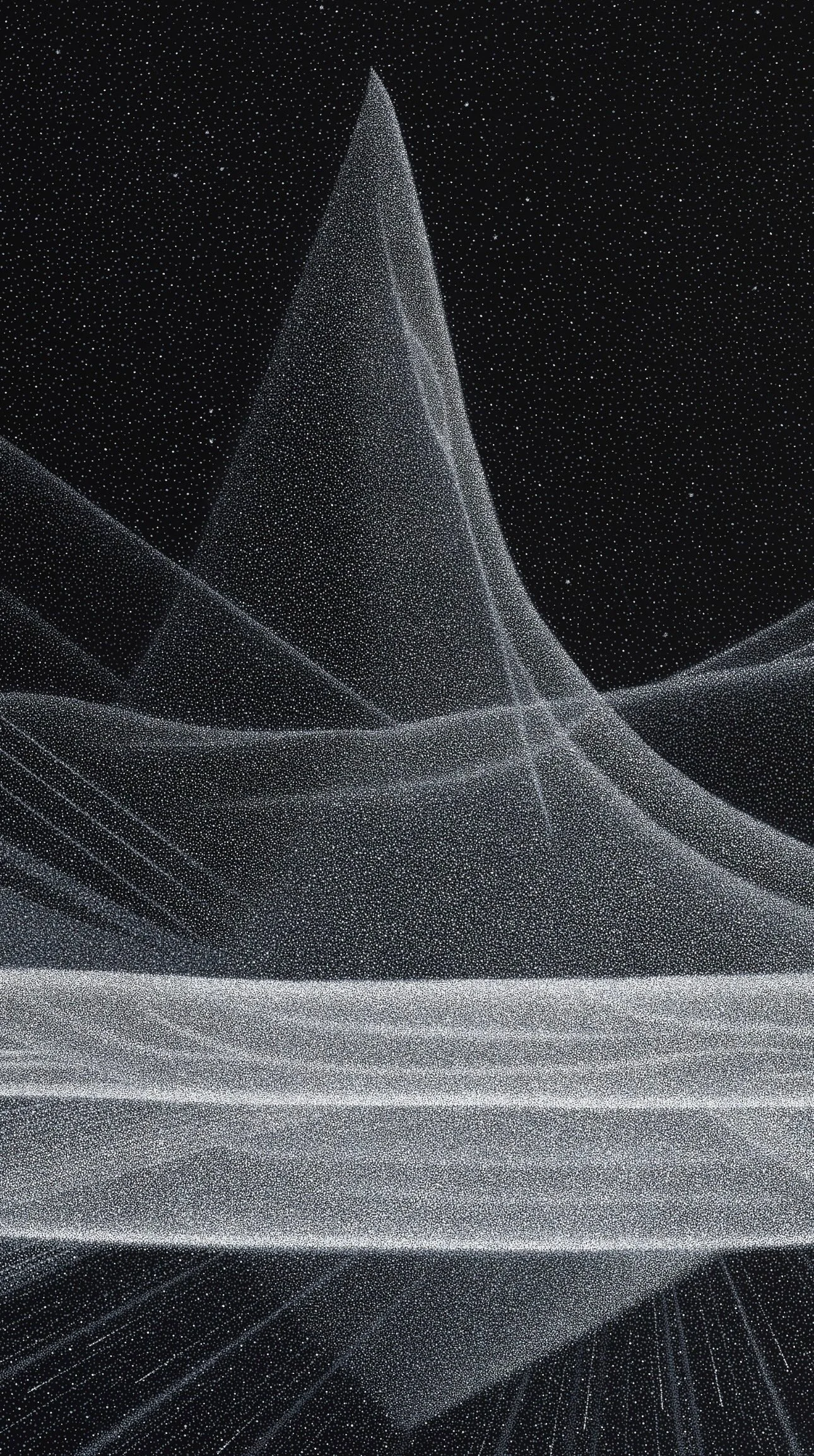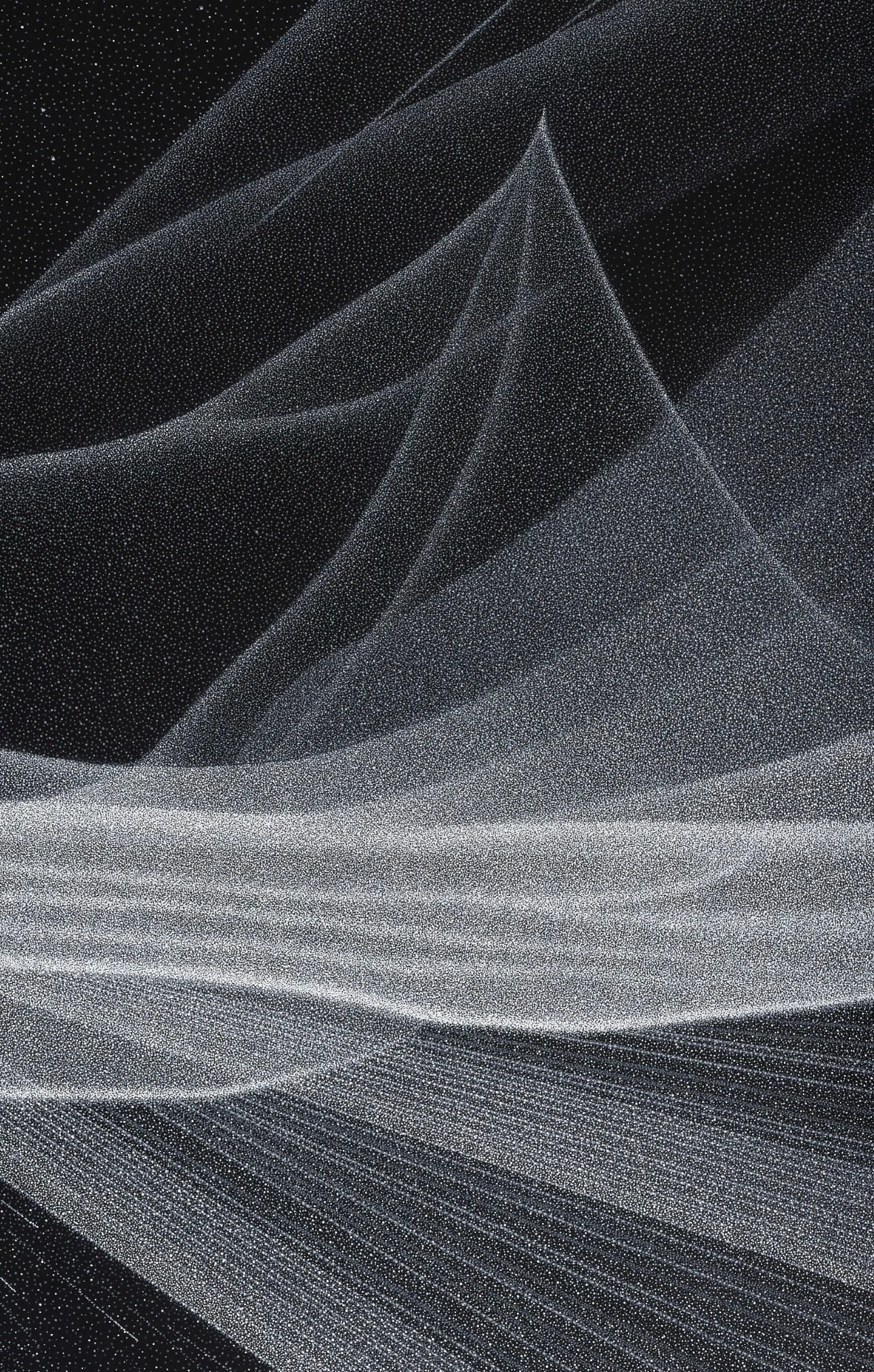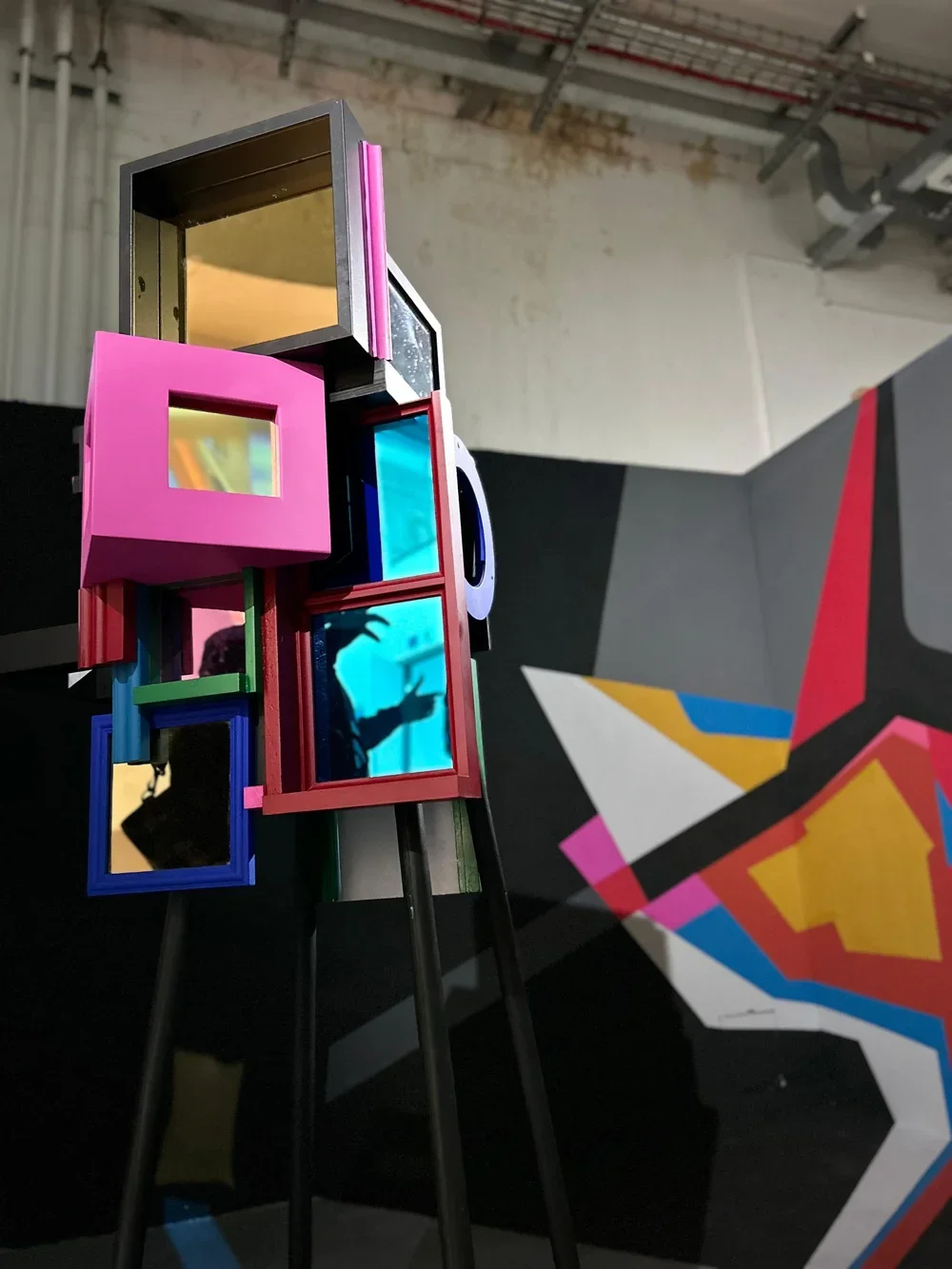The Meditative Pointillism of Cairo Dwek
Cairo Dwek’s technique - thousands of tiny hand-painted dots - creates pieces that shimmer with movement, emotion and atmosphere. But behind this still surface lies a practice rooted in discipline, memory, and meditative focus.
The Creative Spark: Where Cairo Dwek’s Paintings Begin
For Cairo , ideas often arrive in the moments just before sleep. A sudden visual, sensation or emotional memory will jolt her awake and stay with her. Lately, she's been inspired by astronomy, data charts, sound waves, optical illusions, and natural patterns.
She draws on historic influences like Giacomo Balla, who expressed motion through abstraction and rhythmic repetition. Dwek also looks to the blurred imagery of photographers such as Hiroshi Sugimoto and Alexey Titarenko, as well as artist Julie Mehretu, whose compositions pulse with kinetic energy.
Together, these references inform her own exploration of spiritual rhythm and the illusion of motion—all distilled through the quiet precision of pointillism.
The Meditative Flow of Cairo Dwek’s Pointillism Process
Although her compositions begin with sketches and digital blending via AI tools like Midjourney, Cairo Dwek’s final process is deeply physical and slow. She starts each piece by sketching the structure with a water-soluble pencil. This “skeleton” is loose and expressive. Then, with extreme precision, she layers dot after dot—sometimes for over 400 hours—to build gradients of light, energy and color.
The approach is methodical. Her earlier work leaned toward harmony and symmetry. Today, confidence has led to more intuition and fluidity. The dots become meditations that carry rhythm and feeling.
Pointillism as a Response to the Digital World
Dwek often says her dots are like pixels—a conscious parallel to today’s overstimulating digital life. In contrast to the flood of images we see online, her work insists on slowness, intention, and presence.
Her pointillist paintings ask: Can stillness contain motion? Can time-intensive labor be a form of resistance?
A Kitchen Studio: Cairo Dwek’s Creative Space
Much of Cairo’s work begins at home—in her parents’ kitchen. She adopted the space during COVID, when her Goldsmiths studio was unavailable. The kitchen environment shaped her process: organised, tidy, grounded. Her mother’s love of order taught her to work cleanly. She often uses only one color at a time to keep the space clear.
She maps out what to complete each day. Then tapes off sections of the canvas and begins layering dots. The act is so precise and repetitive that her hand becomes “machine-like”—allowing her mind to roam.
Cairo Dwek Paints with People Around—And That Fuels Her
Cairo is not the solitary, tortured painter stereotype. She’s energized by people. She chats with her parents as she paints, takes calls, listens to podcasts, and engages in conversations.
In fact, painting helps her feel more centered and calm—making her better company. The physical repetition becomes a way to free her mind while focusing her energy.
Material and Meaning: Inside Studio Practice
Cairo uses fast-drying acrylic paint and tiny brushes—often one per painting. She adds matte medium to avoid gloss. Her large canvases are custom-built on wooden panels so she can lean over them without strain.
This setup is crucial. She paints for up to nine hours a day and her studio process is crafted to support long-term physical sustainability while also allowing artistic freedom.
Portable Practice: Pointillism On the Go
Cairo’s current travels see her painting small works on the road. Larger pieces require time and stability, so she keeps those for when she’s grounded. She’s interested in artist residencies—but only if they give her enough time to commit fully.
As she continues to evolve, Cairo Dwek brings an unusually reflective voice to the contemporary art world. Her work is intimate, cosmic, digital and spiritual—all at once.
Discover More from Cairo Dwek
Follow Cairo Dwek on Instagram or her site to stay updated with new works, exhibitions, and interviews.

